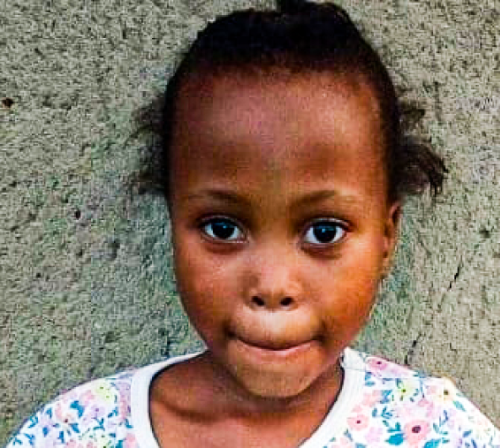While working as a “special writer” at the Independent News Network (The Star/Sunday Independent), I remember putting a line from Macbeth – I have supped full with horrors – as the intro to an article.
And, as I dispatched it to Kevin Ritchie, my long-suffering handlanger back at the office in Johannesburg, I remember wondering whether a Shakespearean quote as intro would get past eagle-eyed Dave Hazelhurst, the day editor, and into the newspaper [i].
I can’t recall if it did. I’m also not even certain if the article was straight-forward reportage or an opinion piece, or what the date was. Which means, obviously, that I can’t this morning locate the article nor say which place I was writing about in it.
I.e., I might have this all – or partially – wrong. But I’m pretty sure the place was a township in KwaZulu-Natal, where somebody had shot up a group of people, killing some children.
I think though that the line from Macbeth was in my mind because it’d been there since I’d seen Roman Polanski’s 1971 version of Macbeth [ii] maybe 20 years before. It was the film’s opening scene that struck me hard. It begins (not with the witches, as the play does) but with Macbeth’s words, So foul and fair a day I have not seen.
The day is “foul” because the witches have raised a storm and “fair” because of Macbeth’s victory on the battlefield. But it’s also foul because the opening scene is of a beach (the “battlefield”), scene of Macbeth’s victory, strewn with the corpses of invading Norwegians, each of whom has been bloodily hacked apart.
Why, I wondered this morning, why do I still remember the movie so vividly – but not the scenes of horror I’ve reported on in a KZN township? Perhaps my once “golden memory” is shredding faster than I realize; maybe, as my gorgeous wife sometimes suggests, I’m just a silly old duffer, having asked her twice within a 10-minute period whether she’s fed the dog.
But I think there’s something else at work – good ol’ repression, especially as defined by S Freud.
Compared, I’d say, to those who’ve covered full-on wars or were present when the death camps were liberated (to take just two examples), as a working journalist I’ve had a relatively sheltered time.
Still, as a youngster in South Vietnam, where my father worked for the World Health Organisation, and as a working SA journalist from 1977 until let’s say 2017 – including working at a desk at the Daily Sun, 2012-15 – I’ve encountered, with my own eyes or via photographs or first-hand accounts – scenes or events that I’m sure I’d prefer not to remember.
In John Berryman’s Dream Song 53 [iii], we read this:
It takes me so long to read the ‘paper,
said to me one day a novelist hot as a firecracker,
because I have to identify myself with everyone in it,
including the corpses, pal. ...
Here’s a “story” culled from a number of recent newspaper reports.
On 21 May the body of six-year-old Bontle Zethu Ditebogo Mashiyane, was found mutilated close to her home – she’d been missing for some three weeks from her home in Mganduzweni, Ehlanzeni, White River.
In fact two men, one of whom is called Collen Hlongwane, who had been arrested the day before, had shown the police where the body was dumped. Hlongwane had been spotted talking to the Bontle just before she disappeared.
Hlongwane, it soon turned out, was out on parole – for the second time. In 2008, he was convicted and sentenced to 10 years in prison for attempted murder. He was released on parole in May 2013. Then, while on parole, Hlongwane murdered Khonzi Ntsingwane and was convicted and sentenced in January 2016 to 15 years in prison. But he spent only five years behind bars before again being released on parole last year.

However, three suspects appeared in court on Monday charged with kidnapping, human trafficking, rape, and murder and who were remanded in custody until June 24. (Because they’re facing a sex offence charge, their names have been withheld as prescribed by the Criminal Procedure Act. In terms of the Act, they may only be identified in connection with the rape charge once they have pleaded.)
The reason there were three suspects is that, besides Hlongwane (whose name has already been published), the police also arrested a 25-year-old “neighbour,” the man initially arrested with Hlongwane, as well as Hlongwane’s 40-year-old “girlfriend”.
She, having been arrested, allegedly told the police that she had previously killed four other children, including her two nieces. And, indeed, she is an aunt to siblings Silindile and Ntokozo Sifunda, murdered in April 2019 in Mganduzweni. They lived on the same street as their aunt and Bontle.
In June 2019, Sowetan reported how the death of the Sifunda siblings led to the killing of local pastor Bheki Malomane, 36, and his nephew, Wonder Mbuyane, 24, who were beaten and then set alight by the community.
Why? A local traditional healer told local community members that Malomane and Mbuyane were, as he understood it from his readings of the bones or general cogitations, involved in the murders of the two little sisters.
Hlongwane was arrested in Edwaleni, near White River, provincial police spokesperson Brig Selvy Mohlala said. “We arrested Hlongwane, who denied killing the child but pointed us to his girlfriend and the girlfriend pointed us to the neighbour [aged 25]. They then all took us to where they dumped the body of the child and also gave us a name of a sangoma and another man.
“Now, the sangoma and the other man are in for questioning ... The girlfriend told us that she was involved in killing another four children from Hazyview and another area, including two of her sister’s children,” Mohlala added.
Mpumalanga Premier Refilwe Mtsweni-Tsipane told newspapers that Bontle’s “body parts were cut, and her head was left with an empty skull, it was just a shell of everything, the eyes, ears, tongue. The child was raped before she was murdered.”
When asked what processes had been followed to give Hlongwane parole, correctional services spokesperson Singabakho Nxumalo said he had served the permissible minimum sentence.
“(The) offender completed all rehabilitation programmes that were allocated to him according to his Correctional Sentence Plan that addresses his offending behaviours. (The) offender also attended social work programmes,” Nxumalo said. Nxumalo claimed only 2% of parolees fail to comply with parole conditions.
On Monday night, the houses belonging to two of the accused and a local sangoma were torched. This followed a meeting during which the community was given an update of the proceedings at the KaBokweni magistrate's court.
So there we are. The alleged rape, dismemberment, and murder of a six-year-old, allegedly by neighbours. The apparent reason? A so-called muti (umuthi) murder.
Apparently, then, there have been a spate of child killings, at least five small children have been murdered, for the procurement of muti in the area – at the behest of whom? – and apparently unnoticed by all, including the police, until now.
One of the suspects? Someone whose two paroles point to what can only be (politely) called the massive ineptitude of the department of so-called correctional services, a department not known for much else.
But did any media outlet or newspaper – other than Sowetan and, to a lesser extent, Scrolla.Africa and Daily Sun – report in any detail on what happened to six-year-old Bontle?
No; they were too busy analysing the urinary exploits of an apparently drunken Stellenbosch university student.
As for the country’s so-called leaders, they were also too busy. The justice minister said that the Stellenbosch incident was akin to urinating on the Constitution itself while the President said the same incident was no aberration but “still a feature of every-day life in South Africa”.
Not one word about Bontle, or her family. Some days I do feel as though I have supped full of horrors.
[i] Only local journo I knew of who ever got away with quoting “poetry” in an intro (Ted Hughes, nogal) was legendary Rand Daily Mail sportswriter Sy Lerman and this was perhaps partially because he was sports editor.
[ii] Which movie, Dr Wikipedia tells us, “Polanski opted to create ... as a means of coping with the highly publicized [and, you might recall, very bloody] Manson Family murder of his wife, Sharon Tate”. [I note also that no one in Hollywood would fund the movie, presumably because of Polanski’s notoriety and the graphic violence and sexuality that he planned to show in the movie, so it was sponsored by Hugh Hefner of Playboy.]
[iii] 77 Dream Songs, John Berryman, 1964. The “novelist hot as a firecracker” is, I believe, Saul Bellow.

